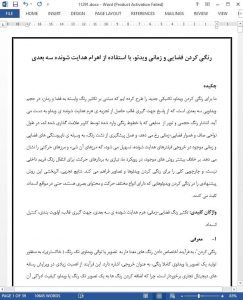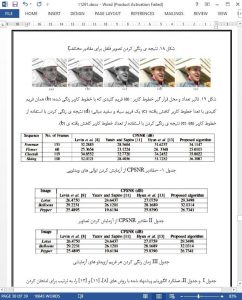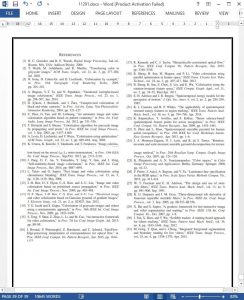Abstract
We propose a new technique for video colorization based on spatiotemporal color propagation in the 3D video volume, utilizing the dominant orientation response obtained from the steerable pyramid decomposition of the video. The volumetric color diffusion from the sources that are marked by scribbles occurs across spatiotemporally smooth regions, and the prevention of leakage is facilitated by the spatiotemporal discontinuities in the output of steerable filters, representing the object boundaries and motion boundaries. Unlike most existing methods, our approach dispenses with the need of motion vectors for interframe color transfer and provides a general framework for image and video colorization. The experimental results establish the effectiveness of the proposed approach in colorizing videos having different types of motion and visual content even in the presence of occlusion, in terms of accuracy and computational requirements.
I. INTRODUCTION
COLORIZATION refers to the process of assigning meaningful colors to the input monochrome image or video sequence to produce a fully colored image or video as the output. This process is of utmost importance in commercial digital media editing since the addition of colors to a monochrome image or video greatly improves its perceptual quality. The term colorization was coined by Wilson Markle in 1970 to refer to the computerized process of adding colors to black and white movies. Since then, image colorization has become one of the most widely explored areas of research in the field of image processing. However, perhaps due to its complexity and greater processing costs, video colorization has received considerably less research attention so far and most approaches handle video colorization by falling back on image colorization techniques, i.e., by colorizing each keyframe individually, followed by color transfer to other frames, using motion vectors.
VI. CONCLUSION
In this paper, we have developed a video colorization algorithm that is capable of colorizing the entire video volume together, without requiring the use of motion vectors between frames. The absence of motion vector computation as well as the spatiotemporal color propagation in 3D space makes our algorithm faster compared with the techniques that employ motion vectors for temporal color transfer. Further, the generalized nature of our algorithm makes it possible to colorize images using the same framework.











